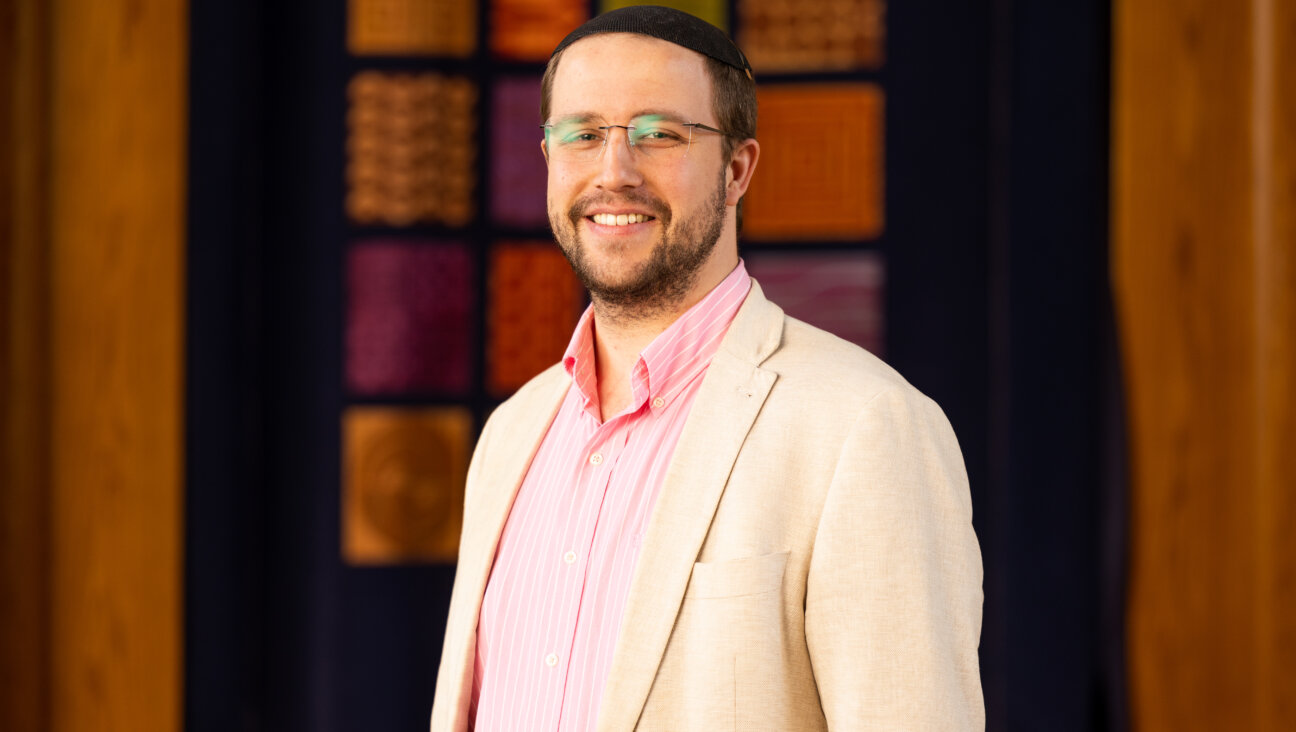Tom Cruise Steals The Show
TOM CRUISE HONORED BY MUSEUM OF MOVING IMAGE
“Son of a single mother, I sold newspapers at 8 [years old] and had lived in so many cities that I do not have a recognizable accent,” Tom Cruise told the stellar crowd at the November 6 Museum of the Moving Image Salutes Tom Cruise gala. “But no matter how unforgiving the world, there is always a spark of future possibilities… films, the magic carpet, the muse of the masses, offer [that spark].” From the stage at Cipriani 42nd Street’s darkened, cavernous room, Cruise called down to his statuesque wife, Katie Holmes, “Katie, I love you!” In 1990, in an October 12 column, I reported that Cruise refused to portray Hollywood heel Sidney Glick in a to-be-directed-by Sidney Lumet film, based on Bud Schulberg’s book “What Makes Sammy Run?” then celebrating the book’s 50th anniversary. It seems he did not want to play an unsympathetic character. When I introduced myself to Cruise during dinner, I cited that column. I really got his attention, however, when I mentioned that at the 2002 Appeal of Conscience Foundation dinner, honoring former Canadian prime minister Jean Chrétien (my tablemate), had been the Church of Scientology International’s president, the Rev. Heber Jentzsch. Abandoning his filet mignon, Cruise rose from his chair, put his arm around me, posed for a photograph and graciously signed my dinner journal. The evening’s presenter ensemble included ** Ellen Barkin**, Kenneth Branaugh, Barry Levinson, Ron Howard, Tim Robbins, Oliver Stone, Michael Peña, Brian Glazer and Juliette Moore. In a congratulatory video clip, Will Smith joshed, “Because I am secure in my manhood, I can say, you’re very handsome.”
Following the award presentation by museum chairman Herbert Schlosser, and a series of clips from some of Cruise’s 25-year filmography — “Born on the Fourth of July,” “The Color of Money,” “Mission Impossible I-II-III,” “Top Gun” and “Rain Man” — Cruise thanked his fellow actors and gave a special bow to “my partner and soldier-in-arms, Paula Wagner.” Wagner, his agent, told how she had touted “Tom [to United Artists] as the ‘new teen star’ [who] became a global phenomenon and movie icon with his debut in ‘Risky Business.’”
“There is no other museum like this!” declared Rochelle Slovin, director of the Museum of the Moving Image. Located in the Astoria section of Queens, this one-of-a-kind repository of film, television and media memorabilia is a must for youngsters and adults. Slovin touted the museum’s forthcoming expansion “that will give us a magnificent state-of-the art building with new theaters, new galleries and a new education complex [to maintain] its close connection with the rapid changes in film, television and digital media.”
Another evening perk was a chance to talk with almost 6-feet-tall film star Leelee Sobieski, a descendant of Polish king Jan Sobieski (who ruled from 1674-1696 and is remembered as a champion of Christian Europe against the Turks). Told her how greatly I appreciated and was moved by her portrayal of a young Jewish woman passing as a Catholic outside the Warsaw Ghetto in Jon Avnet’s 2001 TV docudrama “Uprising.” In one heart-stopping scene, Sobieski is accosted by Jew-baiters — known in Warsaw as schmaltzovniks — who suspect that she is Jewish. She brazenly dares them to accompany her to Gestapo headquarters. Taken aback and unsure of her bluff, they turn and flee.
WEIZMANN INSTITUTE GALA SHOWCASES SCIENTISTS YOUNG AND OLD
At October’s American Committee for the Weizmann Institute of Science Gala, CNN senior analyst Jeff Greenfield, master of ceremonies, posed a Seder-esque question: “Why is this night different….?” Don’t recall his answer, but from my perspective it was the inclusion of a number of young and — may I say — sexy male and female scientists among the more than 40 brainiacs in the traditional across-the-stage procession.
Rodeph Sholom’s senior cantor, Rebecca Garfein, sang the American and Israeli anthems beautifully, and then the black-tie crowd at Cipriani 42nd Street was treated to a stunning, innovative film presentation, “Back to Basics, Forward to the Future,” about the creative groundbreaking research being done at the Weizmann Institute. The film, which has garnered five platinum awards in the media relations division, poses such puzzlers as: “What happens when a sugar binds to a protein?” “Will future transplant tissues be grown on the farm?” “Can evolution provide the tools to help us create ‘designer’ proteins?” “How do the immune system’s B cells grow up safe and sound?”
The evening’s honoree was Maks Birnbach, chairman of Fullcut Manufacturers, Inc., importer of diamonds from Israel and a member of Weizmann’s international board of governors. “Standing up is highly overrated,” witty, wheelchair-bound Birnbach said. Born in Frankfurt am Main, Germany, he had arranged for 47 members of his family to escape to Palestine from Germany. It was noted that his family members were among the first to make the escape. Beginning a career in one of Israel’s first diamond factories, he rose to prominence in the industry and also founded the Eshkol Club, the first social club in Tel Aviv. In the 1940s he secretly joined the Irgun — not even his family knew — and, at the request of Menachem Begin, helped raise funds for the Irgun in the United States. He established the Maks and Naomi Birnbach Laboratory in Cardiovascular Research at the Rehovot campus.
While writing this column, I received a letter from the Weizmann Institute with the sad news that Maks Birnbach passed away November 25.
Cipriani’s cavernous domed space — it had once been a bank — offered the perfect sound setting for the evening’s concluding concert by Canadian Brass, which performed works by Bach, Vivaldi and Bizet. The program notes informed, “Canadian Brass performs on 24-karat gold plated YAMAHA instruments.”
“STEAL ME A PENCIL” AN AMAZING, TRUE HOLOCAUST LOVE STORY
I have never seen so much lip-locking and kissing by a 93-year-old man and his 83-year-old wife as that which takes place between Jack Polak and Ina Polak in the 94-minute Dutch-English documentary “Steal a Pencil for Me” (based on their 2000 book of the same name). What makes this a Holocaust-memoir film with a twist is that Jack Polak, an accountant in Amsterdam, falls for a wealthy diamond manufacturer’s 20-year-old daughter, Ina Soep, with whom he begins an affair while married to his wife, Manja. After being deported to Westerbork Dutch transit camp, Polak, his wife and his lover Soep end up sharing the same barrack, where Polak sends love letters across the aisle to Soep! What might in normal times have been a messy affair of the heart, becomes a dance against death as Polak and Soep end up together in Bergen-Belsen!
Against the Holocaust’s larger canvas, it is the small vignettes of stolen moments together and love letters that sustain them through the horror of impending selection for transport to Auschwitz. The fact that the film opens with elegantly garbed, impeccably coiffed and manicured Ina Polak, the couple planning their 60th wedding anniversary does reduce some of the angst of watching the film. But by the end I wanted to call out to Polak — for the past 20 years chairman-emeritus of the Anne Frank Center U.S.A. — “Enough already with the kissing! Have rakhmones (pity) on all the seniors watching the film whose mates are not that affectionately attuned.” “Pencil” is narrated by Dutch actor Jaroen Krabbe, whose voice some may recognize from his appearances in the films “Crossing Delancey” and “The Fugitive.”
















